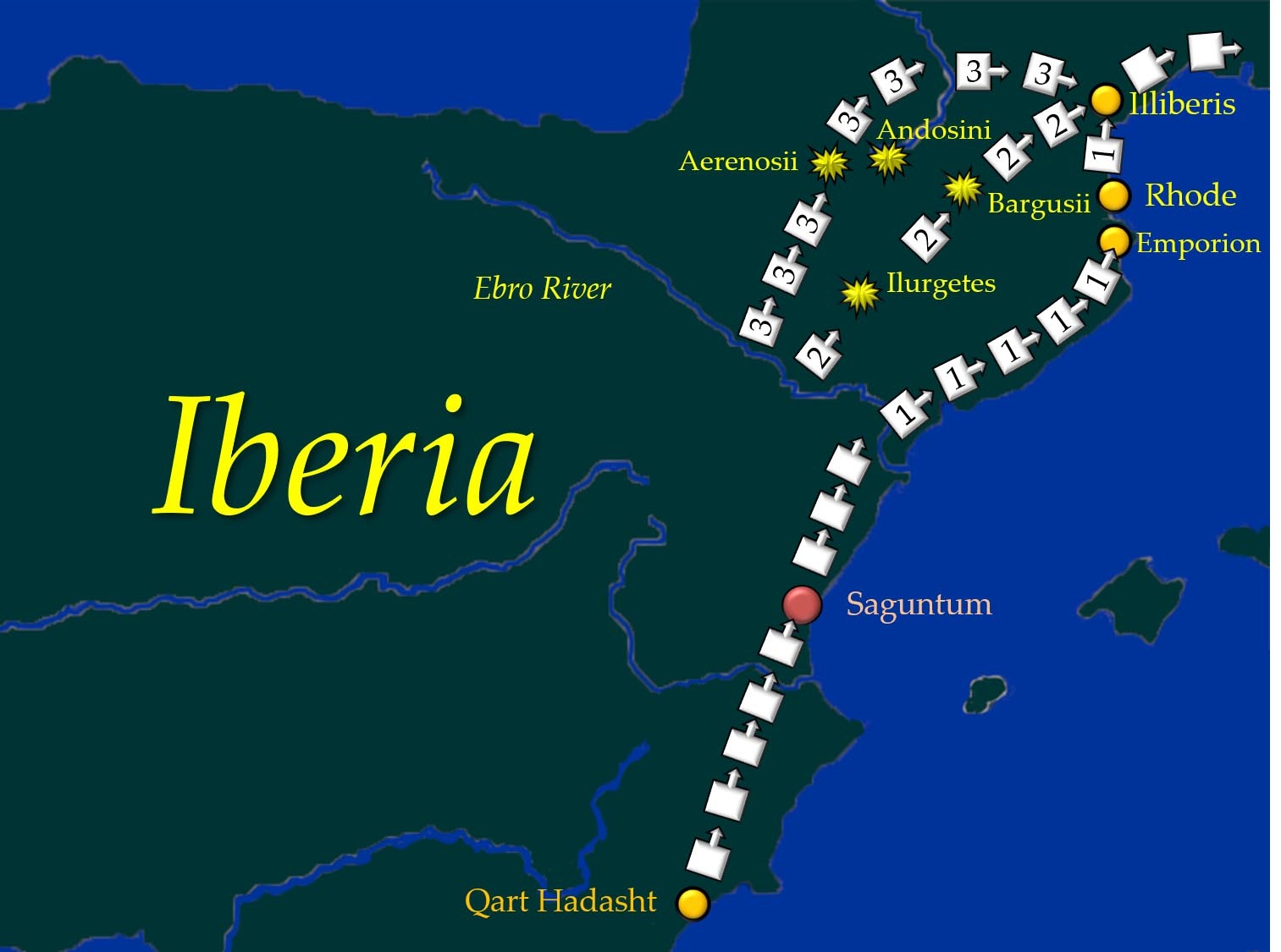219-218 BC
Hannibal’s Conquests in Spain as he Marches on Rome
After the storming of Saguntum, Hannibal retired with his army to Qart Hadasht (Carthago Nova, New Carthage), the capital of Carthaginian Spain. He and his army wintered there as Hannibal collected supplies and called up troops. The army was composed mostly of Carthaginian subjects (Libyans and Iberians) not mercenaries. It was battle hardened and loyal to its general.
218 BC
In late spring of 218 BC, Hannibal and his army of 100,000 men marched for the Ebro River. Just south of the river, the demarcation line between the Carthaginian and Roman spheres of influence, he split his army into 3 columns. The right hand column crossed the Ebro at Adeba (modern Amposta) and marched along the coast with its treasure chest and baggage train. It was screened by a small Carthaginian fleet. Its objective was to take the towns that dotted the coast and to prevent any Roman landings.
The second column crossed the Ebro 45 miles to the northwest (modern Móra d’Ebre) of the first column. It would move up the valleys of the mountain range.
The third column crossed near the confluence of the Sicoris (Segre) and Ebro Rivers and would march up the Sicoris valley.
Hannibal Completes Conquest of Spain before Marching on Italy
Hannibal had to secure his rear before moving on Rome but it cost him. He lost 13,000 men in 2 months of fighting. After the campaign, he detached 10,000 infantry and 1,000 horse to hold the newly won territory and demobilized an additional 8,000 Iberians.
Dodge, TA Hannibal A history of War Among the Carthaginians and Romans down to the Battle of Pydna, 168 B.C., with a Detailed Account of the Second Punic War. 3rd Edition. Originally Published by Houghton, Mifflin and Company, © 1891 The Riverside Press. Cambridge Mass. USA. Pages 171-176.
Polybius. The Rise of the Roman Empire (Classics). Penguin Books Ltd. Kindle Edition Page 252.

